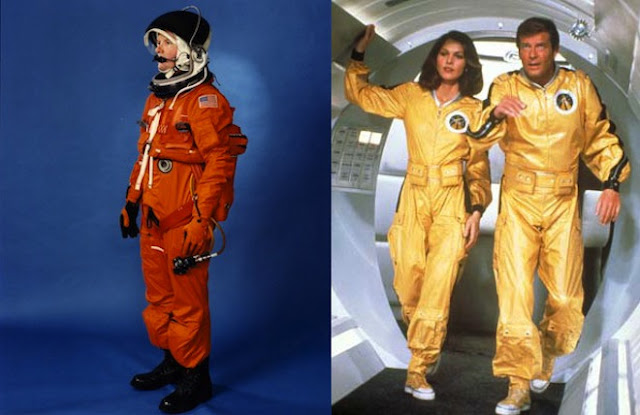By Adam Mann
NASA recently unveiled a prototype spacesuit, the Z-1, to be used by astronauts on deep-space missions. Everyone with eyeballs immediately noticed the similarity between the agency’s idea and the character of Buzz Lightyear from Pixar’s Toy Story movies.
Spacesuits have a long and varied history, both at NASA and in science fiction. While sometimes the design from one is meant to evoke a style from the other, this latest spacesuit appears to be the most blatant. Here, we take a look at several spacesuits from NASA’s pioneering manned programs and contrast them with those from sci-fi films of the same era.
It’s up to you to tell us who is stealing whose concept and which example seems superior. Please let us know your thoughts in the comments.
Z-1 vs. Buzz Lightyear
NASA says their prototype spacesuits would incorporate a number of technology advances to make them easier to put on, while improving safety during spacewalks and potential surface activities. Buzz seems to have them beaten, already going to infinity and beyond.
Image: NASA/Pixar
Mercury vs.Phantom Planet
NASA’s Project Mercury was tasked with beating the Soviets into outer space. Running from 1959 to 1963, the program gave Americans their first taste of real spacesuits. In the left image, you can seeprofessional badass Gordon Cooper in his spacesuit. The Phantom Planet is a classic 1961 sci-fi movie in which a crew of Mars-bound astronauts (from 1980!) get sidetracked to a mysterious wandering world inhabited by 6-inch-tall men. The film abounds with classic sci-fi tropes, including bizarre space monsters and damsels in distress, plus some cool-looking spacesuits.
Image: NASA/The Phantom Planet
Gemini vs. The First Men in the Moon
The top two images come from the second U.S. space program, Project Gemini, which included pressurized suits and the daring first American spacewalk in 1965. The lower one comes from a 1964 film adaptation of H.G. Well’s The First Men in the Moon, in which a crew of British astronauts are first to the moon (how unrealistic). Once there, they discover a British flag, which turns out to have been planted there more than 60 years earlier by a secret Victorian expedition.
Image: NASA/The First Men in the Moon
Apollo vs. 2001: A Space Odyssey
This is a tough one. Perhaps the most iconic spacesuit, the Apollo-era lunar astronauts’ in 1969, set up against the best spacesuit in all of science-fiction, from 1968′s 2001: A Space Odyssey.
Image: NASA/2001: A Space Odyssey
Shuttle vs. Moonraker
After the end of Apollo, NASA shifted focus to their new Space Shuttle, a partially reusable spacecraft first flown in 1981 that stayed in service for 30 years. Shuttle astronauts’ well-known orange spacesuits are deeply embedded in the public consciousness. Though the much-maligned Moonraker wasn’t the best Bond film of all time, it contains some snazzy spacesuits that upped the sex appeal of the space program.
Image: NASA/Moonraker
NASA Future vs. Film Future
Starting in the early 2000s, NASA began testing its new spacesuit designs (top), which were planned for use on the lunar surface beginning in 2020. They were easier to take on and off than previous suits and provided greater mobility and strength. It seems that the makers of the movie Mission to Mars, from 2000, didn’t quite have the same ideas in mind when planning their crew’s spacesuits (below), for a fictional 2020 manned Mars mission that goes terribly awry.
Image: NASA/Mission to Mars
































Tidak ada komentar